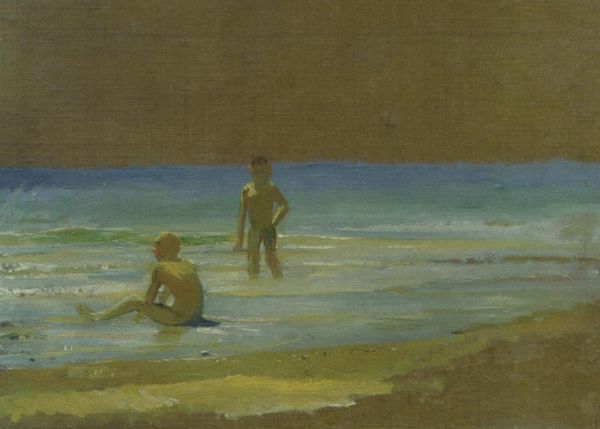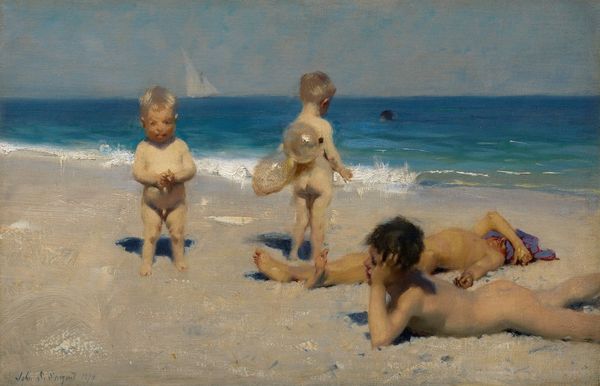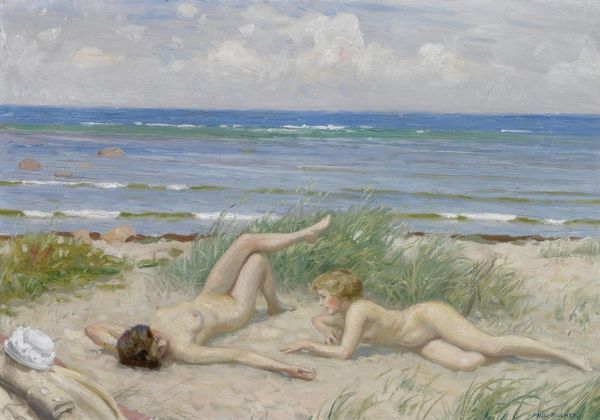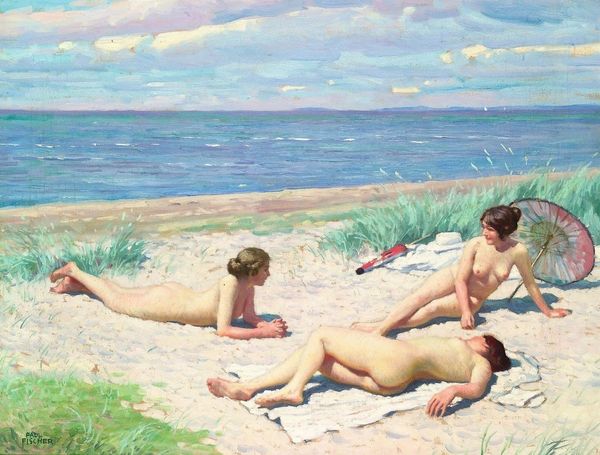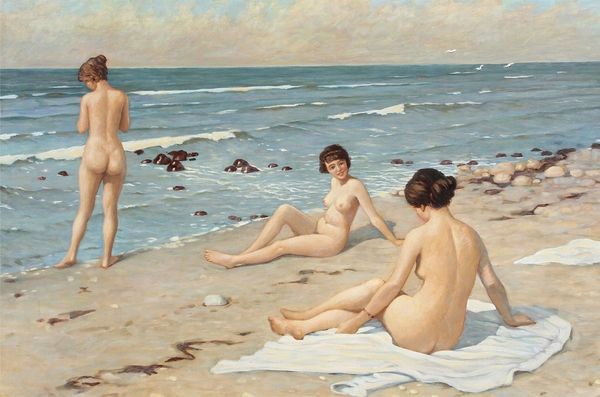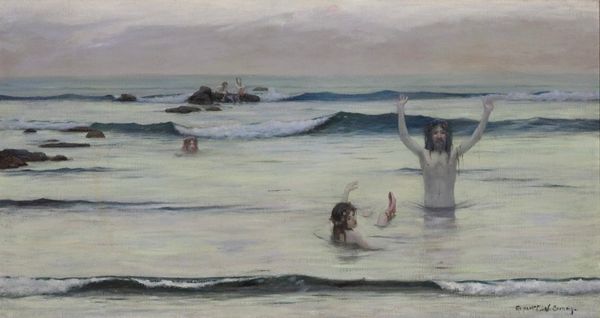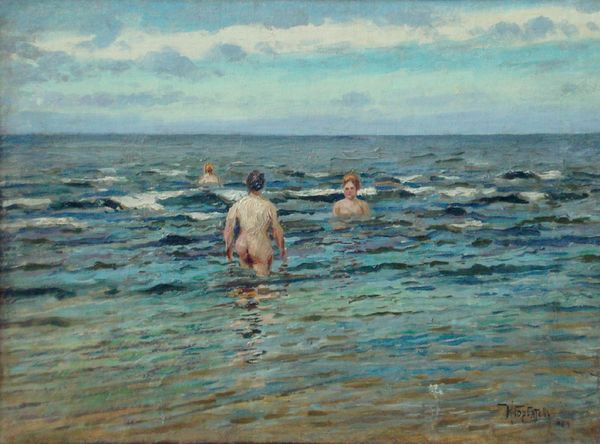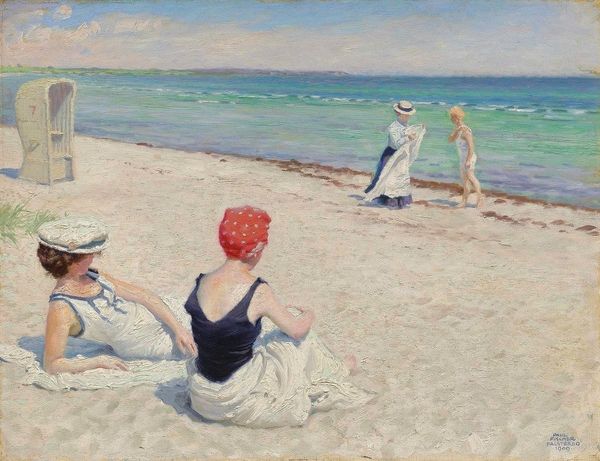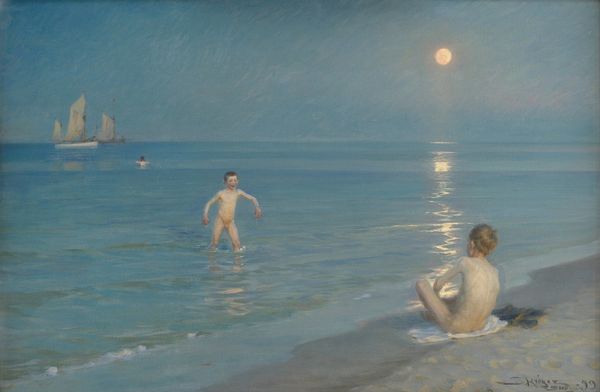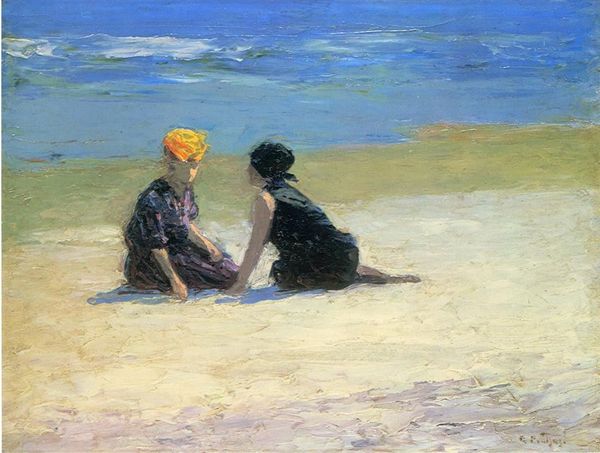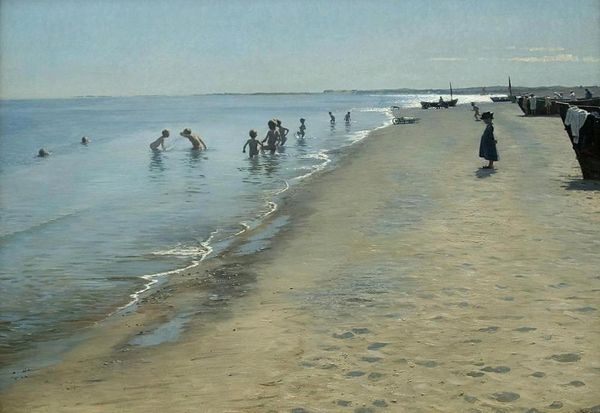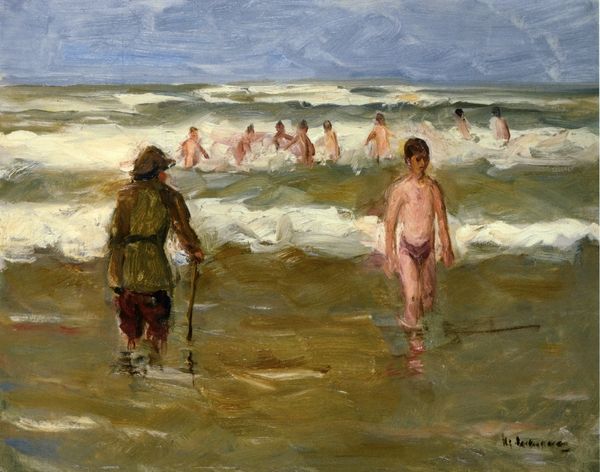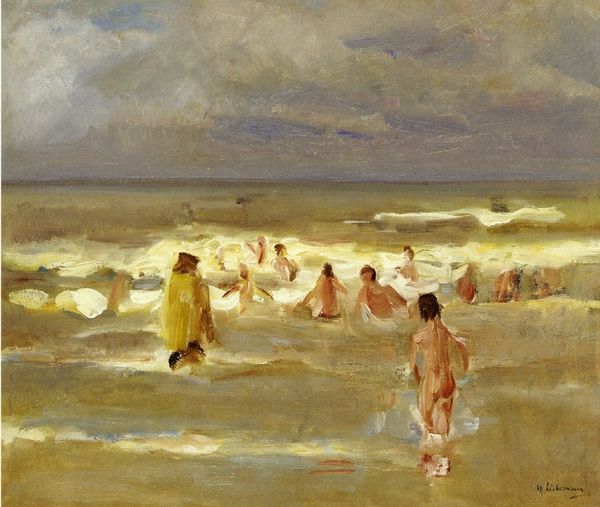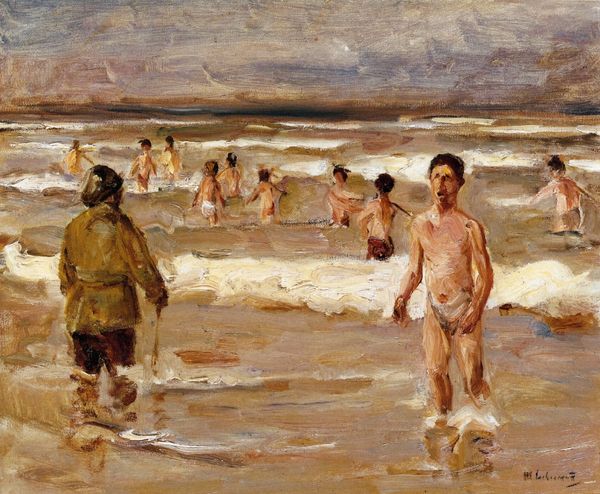
Copyright: Public domain
Editor: This is Rupert Bunny's "Sea Idyll," painted in 1891, with oil paints used en plein air, or outdoors. It evokes a sense of wistful serenity. The pale palette really gives it an ethereal quality. How do you see this work through a materialist lens? Curator: For me, the crucial aspect is considering the availability and cost of oil paints in 1891. Were these paints commercially produced, or did Bunny, or someone in his studio, grind the pigments? The shift to commercially available paints massively impacted artistic production at this time. It democratized access to materials, but also altered the relationship between artist and craft. How might that play out in the social space this image seems to represent? Editor: That's a great point! The figures look quite leisurely. Knowing more about the process helps to understand if this was an artist enjoying newfound ease of access, or trying to represent a certain level of elite life on the beach. What are your thoughts on the surface, the texture of the brushstrokes themselves? Curator: Exactly. It's tempting to romanticize the ‘Idyll,’ but we should also think about how the scene is constructed and presented. Was ‘plein air’ painting really possible without a whole support structure and specific economic conditions? Note the texture and tone, the artist is almost explicitly trying to smooth over labor; making production invisible. What effect does that flattening have? Editor: So, the visible brushstrokes are almost secondary to the knowledge that they conceal even more work in acquiring and preparing the paints and materials. It encourages one to appreciate not only the finished piece but also to consider what it took to make it. Curator: Precisely. By examining the materiality, we challenge assumptions and gain a deeper insight into art production and its relationship with social conditions. It moves us away from mere aesthetic appreciation to a broader understanding of art as labor. Editor: That gives me a completely different way to look at paintings from now on. Thanks so much. Curator: My pleasure. Looking at the material is often a starting point. There is always more to ask.
Comments
No comments
Be the first to comment and join the conversation on the ultimate creative platform.
